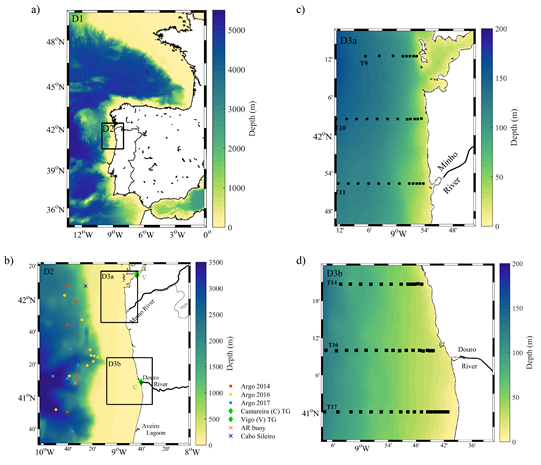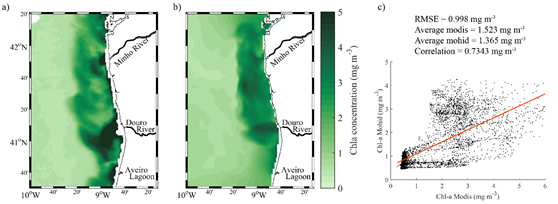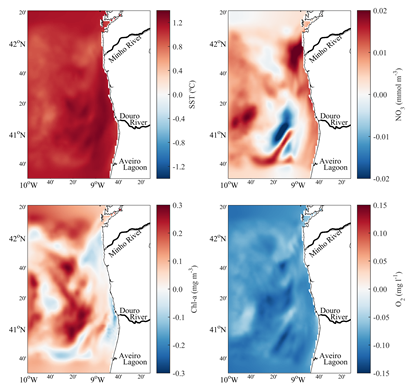Topic 4 - Biodiversity
Testing and calibrating oceanographic models with all the information available
Ocean information, both physicochemical and biological is needed to understand ecosystems and their dynamics, to forecast changes in species ranges, populations and communities, and to, ultimately, allow sustainable resource management.
Newly acquired project data, data from existing ocean observation infrastructures (such as the RAIA Observatory), higher (temporal) resolution and better coverage information from satellite remote sensing, and oceanographic model outputs were used to assess: the NW Iberian hydrodynamics and particularly its upwelling system; population dynamics, dispersal and connectivity; primary production; species recruitment and ecosystem services; among others, which show particular regional features and are very important for marine resources and the regional economy. Dynamics and spatial and temporal variability associated to atmospheric and oceanic cycles and conditions were analyzed to produce reliable forecasting of climate-induced environmental changes.
A coupled circulation and biogeochemical model (MOHID) was implemented and validated for the whole northern Portuguese coast, and used to understand the impact of climate changes in the study area.



